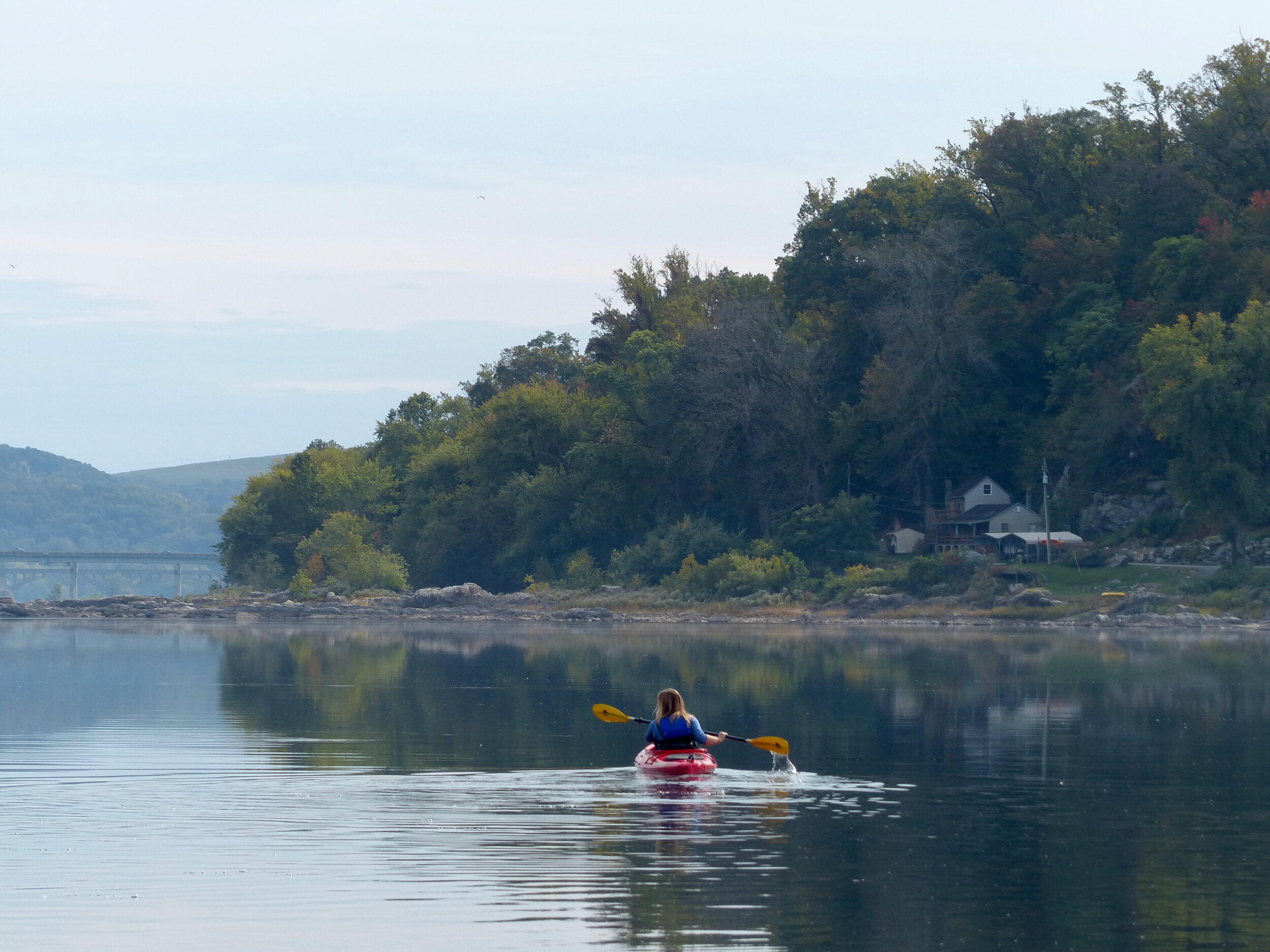
Chickies Rock Watertrail
Kayaking the Lower Susquehanna River
by Teresa Maier
Welcome to your kayak rental adventure on the Lower Susquehanna River! The Susquehanna River meanders 444 miles from near Cooperstown, New York, until it empties into the Chesapeake Bay in Maryland. Scientists consider it one of the oldest rivers in the world, older even than the mountains through which it flows.
Marietta, Pennsylvania
Marietta was settled in the beginning of the 1700s, with a ferry across the river established in 1740. In 1812, the town was incorporated as a borough and named Marietta, a combination of the first names of Mary Cook and Etta Anderson, the wives of two first settlers. A town rich in history, almost half of Marietta is listed on the National Register of Historic Places. It has long attracted artists, scientists, and people who love river life.
Iron
By the 1800s this stretch of the Lower Susquehanna River bustled with canal boats on the Pennsylvania Canal and rafts coming down river loaded with lumber, coal and other commodities. Local deposits of iron ore and limestone, the raw materials needed for the smelting of iron by coal-fired hot blast furnaces, led to eight furnaces being built in the two miles along the river between Marietta and Columbia. Scattered foundations and railway supports can be seen in numerous places in the woods that have reclaimed the river bank since the furnaces were dismantled.
Chickies Rock
Chickies Rock, a massive outcropping of quartzite rock towers over 100 feet above the river. Considered a premier rock climbing location in Pennsylvania, it also has an easy-to-access overlook with a vista offering impressive views of York County, Marietta, and the farmlands of northwestern Lancaster County.
Eagles
Bald Eagles are a common sight while kayaking on the Susquehanna River. Eagles stand 31-37 inches tall with a wingspan up to 7 feet. They have pure white heads and tails that contrast with their dark brown bodies. Eagles are often seen soaring and gliding in circles as they search for prey, as well as resting on river rocks or in trees. They are distinguished from the similar-looking turkey vulture by their large heads, long wings held straight out, and smooth (not teetering) flight.
Fish
The Susquehanna River is a popular spot for fishing. Known especially for its smallmouth bass, the river also has largemouth bass, catfish, rock bass, carp, and sunfish, among others.
Bridges
Coming downriver, the first bridge you come to is the Wright’s Ferry Bridge, which carries Route 30 across the river. Construction was completed in 1972. Its name remembers both the ferry that was established in 1730 and one of Columbia’s former names.
The second bridge is the Columbia-Wrightsville Bridge, officially the Veterans Memorial Bridge. The river is all but a mile wide here and the bridge is the world's longest concrete multiple-arch bridge. This graceful span was first opened in 1930.
Empty Bridge Piers & Civil War
The 27 empty bridge piers between the two existing bridges have held three bridges over the years, but the most notable was a wooden covered bridge that opened in 1834. This bridge carried railroad and highway traffic, and included a unique two-level towpath allowing canal boats to cross the river.
In 1863, during the Civil War, the Confederate Army marched into Wrightsville in hopes of crossing the river, seizing the iron furnaces and rich farms of Lancaster, and advancing on Harrisburg. The small group of Union militia in the county realized that they had no chance of holding the bridge against the experienced Confederate forces approaching them. On June 28, 1863, the militia burned down the bridge and the Confederate troops were forced to turn west and join the armies converging on Gettysburg.
Mayflies
Summer nights bring millions of mayflies emerging from the Susquehanna River. Adult mayflies emerge from their nymph form, take flight, mate, lay eggs and die in just a day or two. Because the mayflies cannot survive in polluted water, the swarms are seen as a celebration of clean water efforts along the Susquehanna.
Columbia, Pennsylvania
Columbia was founded in 1726 by a group of Quakers led by John Wright. The establishment of a ferry crossing brought growth and prosperity to the small town. Between river traffic and the railroad hub, the 1800s saw Columbia as an important center of industry and transportation. Today it is known for its historic architecture, antique markets, and ready access to outdoor adventures.
